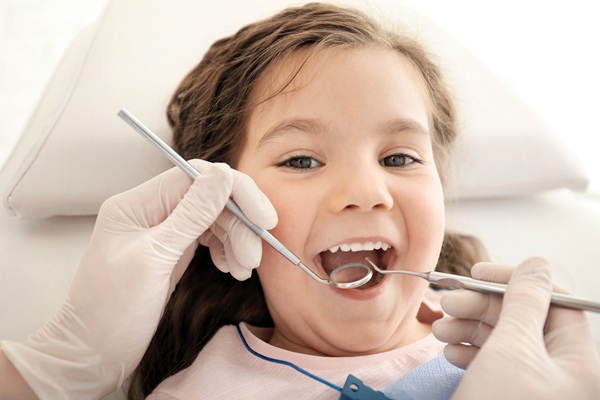When Is Dental Bonding for Kids Necessary?

Dental bonding for kids is a versatile, minimally invasive treatment option for a wide range of dental concerns. Dentists can typically restore a child's teeth to full form, function, and aesthetics by adding a tooth-colored resin substance to the tooth surface and curing it with a special light. It is important for parents to know the indications for dental bonding in children so that they may make educated choices regarding their care.
When is dental bonding for kids needed?
Accidents and sports-related injuries may all lead to chipped, cracked, or broken teeth in kids. Dental bonding is a popular option for fixing such damage because it can usually repair and restore the tooth's look, function, and strength. Additionally, the bonding material may be color-matched to the adjacent teeth for a completely natural-looking and undetectable restoration.
Other applications of dental bonding for kids include:
Gaps between teeth
Dental bonding for kids is an effective method for closing diastemas, which is the term for spaces between teeth. Children's self-esteem may suffer as a result of these gaps. With dental bonding, dentists may fill in these spaces by applying the resin to the teeth, creating a more even and aesthetically attractive smile.
Reshape irregular or misshapen teeth
Some children may be born with teeth that are uneven in size, shape, or contour; this may have serious consequences for their bite and dental health. The dentist can use dental bonding to alter the size and form of these teeth for cosmetic and functional improvements.
Treat tooth decay
Dental bonding may be used as a replacement for amalgam fillings in cases of moderate to severe tooth deterioration. Dentists may repair cavities and rebuild the tooth's structure using the tooth-colored resin substance. This procedure will also protect the tooth from future decay while making it look completely natural.
Cover discolored teeth
In cases of intrinsic tooth discoloration that is resistant to typical teeth whitening treatments, the pediatric dentist might recommend dental bonding to cover the affected teeth. The resin substance may be painted onto the discolored tooth, allowing it to match with the remaining teeth again. This procedure can help a child feel less self-conscious about their smile.
Protect exposed tooth roots
Gum recession can cause exposed tooth roots, which may result in decay and heightened tooth sensitivity. Covering and preserving these exposed roots with dental bonding for kids may lessen pain and prevent additional damage to the tooth.
Improve bite function
The dentist can use dental bonding to fix minor bite problems, including slightly misaligned teeth, in children. Dental bonding may correct a misaligned bite and restore proper bite function by altering the size and form of the impacted teeth.
While waiting for more permanent dental restorations, like dental crowns or orthodontic treatment, dental bonding may serve as a temporary solution for aesthetic and functional issues.
The bottom line
Children can benefit from dental bonding in a number of ways, including fixing broken or chipped teeth, reshaping irregular or misshapen teeth, covering discolored teeth, and improving bite function. Early detection and treatment of tooth problems with dental bonding may help parents ensure their kid has a lifetime of good oral health. If you are wondering whether dental bonding for kids is the best option for your child's specific dental requirements, contact our dental office to schedule a pediatric dentistry appointment.
Request an appointment here: https://www.littlesproutspd.com or call Little Sprouts Pediatric Dentistry at (973) 221-2919 for an appointment in our Glen Ridge office.
Check out what others are saying about our dental services on Yelp: Dental Bonding in Glen Ridge, NJ.
Related Posts
Your child’s pediatric dentist knows that children are still learning how to hold the brush and be thorough. For children who are starting to brush and floss, doing a good job can be difficult. Your child can get distracted or bored and miss big portions of the mouth. Getting children to floss is even more…
Your pediatric dentist can clear the air when it comes to plaque and tartar. As a responsible parent, you should ask your child’s dentist about the most common dental problems — plaque and tartar. Dental health starts in early childhood. It is always prudent to do what you can to prevent these substances from taking…
As a parent, implementing preventive pediatric dental care is important. Your priority is your child’s health. Dental health influences one’s general health. As a responsible parent, preventing dental problems is important. If you want to know more about preventive pediatric dental care, here are the details.A child’s dental care must have a routine dental check…
Your pediatric dentist can remove tartar from your child’s teeth. Tartar is stubborn and hard. Even so, many parents wonder if a child can strip off tartar through daily flossing and brushing. If you want to know if this is possible, here are some questions you should ask a pediatric dentist.Calculus is another word for…
